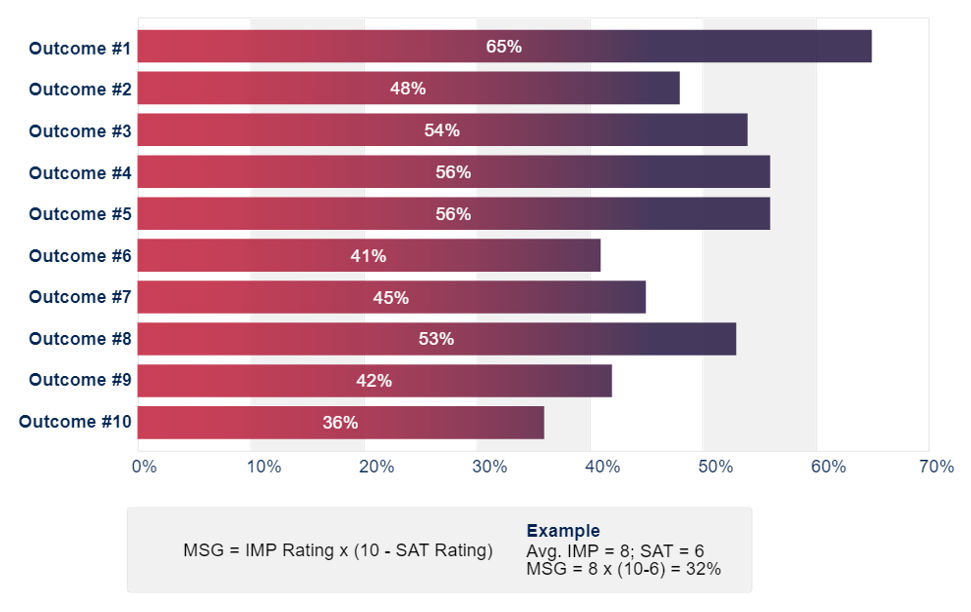Golf Ball Machines: Defending your turf
A New Product Blueprinting Case Story

Situation
This Fortune 500 client played a small role in the production of golf balls. They weren’t a ball producer themselves, but rather they supplied components to those that made golf ball production equipment. That’s the background: What they learned surprised them—and us—because we’d never seen it before.
Approach
The team began with divergent, qualitative Discovery interviews to uncover as many customer outcomes as possible. This is a concentrated market… so they got a nice list of outcomes with just six interviews.
Next, they conducted convergent, quantitative Preference interviews with the same companies. They asked customers to rate importance and satisfaction on a 1-to-10 scale, hoping to find at least one outcome that scored a Market Satisfaction Gap of 30% (high importance and low satisfaction). When companies use the Blueprinting methodology, they “anchor” these numbers by telling customers what they mean. In satisfaction scale, for instance, a “5” is “barely acceptable” and a “10” is “totally satisfied.” This is where the surprise came in: Nearly every outcome scored less than barely acceptable! And as a result, every outcome had a Market Satisfaction Gap in excess of 30%… the standard for a market eager for improvement. What was happening here?
Results
Turns out they were a leading supplier of this “niche” component… but they had not introduced a new product into this market for 30 years. Wisely, they decided they were extremely vulnerable to competitors, and developed a new product to defend their turf.
Lessons
We see many Market Satisfaction Gap profiles from our clients’ work. (See Preference Interview Research Report.) We’ve learned that each profile “tells a story.” And this story always makes sense after the client sees it… but they are often operating blind until then.
One more lesson: Don’t use forced rankings in customer interviews, asking customers to rank outcomes #1, #2, #3 and so on through #10. You’ll be tempted to pursue the highest ranked outcomes and neglect the rest. In this case, all outcomes were worthy of pursuit. (And the converse can be true: None may be worth pursuing.)
